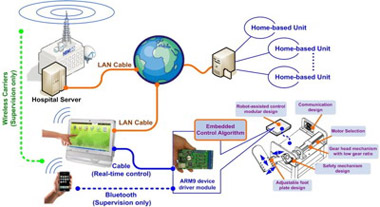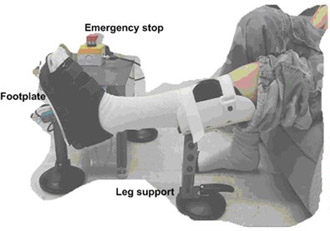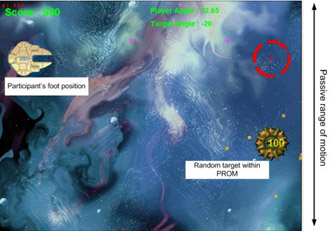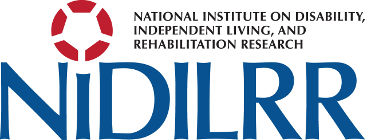Research Activities
Home-Based Tele-Assisted Robotic Rehabilitation of Joint Impairments in Children with Cerebral Palsy
This study investigates advanced mobility modeling to improve function and longer term transitional care of children with severe orthopedic disabilities. Two main research areas of this project include: 1) upper extremity inverse (UE) dynamics modeling for mobility and 2) advanced lower extremity (LE) modeling for pes planovalgus. This study examines the relationship between UE joint demands and assistive devices, and characterizes the in vivo motion of the tarsal bones (LE) in patients with flexible flatfoot deformity. The correlation among joint dynamics, joint loading, pathology, mobility device, function, and pain will be established. Biomechanical evaluations include 48 children with severe cerebral palsy (CP), myelomeningocele (MM), spinal cord injury (SCI), and osteogenesis imperfecta (OI), and 20 children with pes planovalgus. It is anticipated that the biomechanical, functional, and transitional findings of this study will direct improvements in rehabilitative treatment, intervention and therapeutic management for children with severe orthopedic disabilities.
This study extends rehabilitation care beyond the hospital and brings rehabilitation service conveniently to homes for children with orthopedic disabilities. A portable rehabilitation robot incorporating the latest technologies (intelligent stretching, robot-guided voluntary movement training with motivating games, and telecommunication technology) provides convenient and cost-effective rehabilitation to children with severe orthopedic disabilities. Clinicians also interact with the patients remotely for periodic evaluations and updated guidance.
- Co-PI's
- Li-Qun Zhang, Ph.D.
- Yupeng Ren, M.S.
- Patient population
- Cerebral Palsy (CP): 48
R3 Update: 2012 Annual Meeting
- Progress
- Progress - HB
- Accomplishments
- Challenges & Solutions
- Opportunities
- Plans for Year 3
R3 Video: Robotic Assistive Device
Video shows a new robotic assistive device that is being evaluated in RERC project R3, which uses computer gaming to better direct the rehabilitation process and fully engage the user in their therapy.
R3 Hypotheses
- Combined intelligent stretching and voluntary movement training reduces ankle impairment in children with CP in terms of selected biomechanical and functional measures
- Home-based rehabilitation in patients with CP will be more effective than lab-based rehabilitation in reducing ankle impairment with improved motor control in terms of the biomechanical and functional measures
R3 Aims
- Refine existing prototypes and develop a portable rehabilitation robot capable of combined passive stretching and active movement training with an integrated telecommuting interface and suitable for home- and lab-based rehabilitation of spastic ankles
- Conduct 6-week home- and lab-based rehabilitation sessions of impaired ankles in children with CP using the portable tele-assissted rehab robot
- Evaluate outcomes in both groups of children with CP in terms of biomechanical and functional measures, including passive and active ROMs, strength, selective motor control, balance, and mobility
R3 Experimental Equipment Preparation
- Technology preparation of home-based robot-guided device
- Technology preparation of tele-assessment function
R3 Procedures
- System evaluation
- Operation pre-training
- Training protocol for hospital and home settings
- Implementation of game- playing for biofeedback
- Tele-assessment protocol
- Protocol, data collection and measurement techniques for hospital & home settings
R3 Anticipated Timeline
| Tasks | Year 1 | Year 2 | Year 3 | Year 4 | Year 5 | |||||||||||||||
|---|---|---|---|---|---|---|---|---|---|---|---|---|---|---|---|---|---|---|---|---|
| Technical preparation of home-base robot- guided device | Q1 | Q2 | Q3 | Q4 | ||||||||||||||||
| Technical preparation of tele-assessment function and network | Q3 | Q4 | Q1 | Q2 | Q3 | Q4 | ||||||||||||||
| Subject recruitment | Q2 | Q3 | Q4 | Q1 | Q2 | Q3 | Q4 | Q1 | Q2 | Q3 | Q4 | Q1 | Q2 | Q3 | Q4 | Q1 | Q2 | Q3 | ||
| Evaluate the system | Q3 | Q4 | Q1 | Q2 | Q3 | Q4 | ||||||||||||||
| Data collection in control group | Q2 | Q3 | Q4 | Q1 | Q2 | Q3 | Q4 | Q1 | Q2 | Q3 | Q4 | |||||||||
| Data collection in study group | Q1 | Q2 | Q3 | Q4 | Q1 | Q2 | Q3 | Q4 | Q1 | Q2 | Q3 | Q4 | Q1 | Q2 | ||||||
| Data analysis | Q1 | Q2 | Q3 | Q4 | Q1 | Q2 | Q3 | Q4 | Q1 | Q2 | Q3 | Q4 | Q1 | Q2 | ||||||
| Publications | Q1 | Q1 | Q1 | Q3 | Q4 | Q1 | Q2 | Q3 | Q4 | |||||||||||











